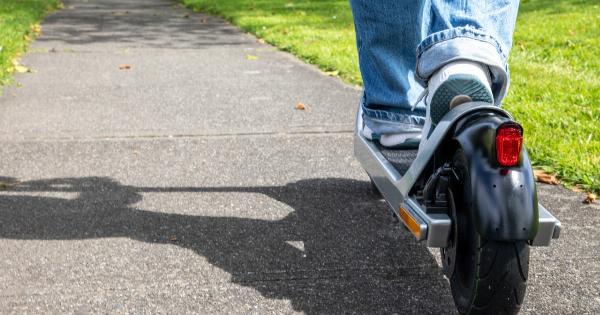Injuries or illnesses that affect the functionality of our limbs can have a significant impact on our quality of life. Simple tasks that were once effortless become arduous challenges.
Fortunately, advancements in medical technology have paved the way for innovative solutions that can reinvigorate our limbs and restore lost mobility. One such solution is electrical stimulation, a technique that utilizes electrical currents to stimulate muscles and nerves, promoting reconnection and improvement in limb function.
The science behind electrical stimulation
Electrical stimulation works by delivering electrical signals to the affected muscles or nerves, mimicking the natural impulses that are sent by the brain. These electrical currents stimulate the motor neurons, prompting muscle contractions.
By activating the muscles, electrical stimulation not only strengthens and tones them but also enhances blood circulation to the area, promoting healing and reducing muscle atrophy.
The process involves the use of electrodes, which are placed strategically on the skin over the targeted muscles or nerve points. These electrodes are connected to a device that regulates the electrical output, ensuring safe and controlled stimulation.
Depending on the individual’s condition and the desired outcome, different modes and intensities of electrical stimulation may be used.
The benefits of electrical stimulation for limb re-energization
Electrical stimulation offers several advantages when it comes to rejuvenating and re-energizing limbs:.
1. Enhanced muscle strength and function
Electrical stimulation helps muscles regain strength, tone, and size. The repeated muscle contractions induced by electrical impulses stimulate protein synthesis, which ultimately leads to muscle growth and improved functionality.
This is particularly beneficial for individuals who have experienced muscle weakness due to injury, surgery, or neurological conditions.
2. Restored range of motion
When limbs are immobile for extended periods, joints and surrounding tissues can become stiff and rigid. Electrical stimulation aids in the mobilization of joints, allowing for greater range of motion.
By reducing joint stiffness and increasing flexibility, individuals can regain the ability to perform tasks that were once challenging or impossible.
3. Pain management
Electrical stimulation has been proven effective in relieving pain associated with limb injuries or chronic conditions such as arthritis.
By stimulating sensory nerves and disrupting pain signals, electrical stimulation provides a non-invasive and drug-free method of pain relief. This can significantly improve the quality of life for individuals suffering from chronic pain.
4. Neurorehabilitation
For individuals with neurological conditions or who have suffered from strokes, electrical stimulation can aid in the reconnection and retraining of neural pathways.
As the electrical currents stimulate the affected nerves, they promote the formation of new neural connections, facilitating the recovery of lost or impaired motor function.
5. Faster recovery and rehabilitation
Electrical stimulation accelerates the healing process and promotes tissue regeneration. By enhancing blood flow, electrical stimulation ensures an adequate supply of oxygen and nutrients to the affected area.
This hastens the repair process and reduces recovery time, allowing individuals to return to their daily activities more quickly.
Applications of electrical stimulation for limb re-energization
Electrical stimulation can be used in various ways to re-energize limbs and restore lost mobility:.
1. Functional electrical stimulation (FES)
FES involves the use of electrical stimulation to activate muscles that are no longer responsive due to neurological conditions or injuries.
FES can help individuals regain movement in paralyzed limbs, enabling them to perform activities of daily living with greater independence.
2. Transcutaneous electrical nerve stimulation (TENS)
TENS is a technique that uses electrical stimulation to relieve pain by blocking pain signals to the brain. This method is commonly used for individuals with chronic pain conditions such as fibromyalgia or arthritis.
3. Neuromuscular electrical stimulation (NMES)
NMES is utilized to improve muscle strength and prevent muscle atrophy. It is often employed in rehabilitation settings to aid in the recovery of muscle function after injuries or surgeries, such as knee or hip replacements.
4. Spinal cord stimulation
Spinal cord stimulation involves the implantation of a device that sends electrical signals to the spinal cord, blocking pain signals and providing relief. This technique is particularly useful for individuals experiencing chronic limb pain.
5. Interferential current therapy (IFC)
IFC utilizes higher-frequency electrical currents that penetrate deeper into the tissues, promoting pain relief and muscle stimulation. It is commonly used to address conditions such as muscle spasms and strains.
Risks and considerations
While electrical stimulation is generally safe, there are a few risks and considerations to be aware of:.
1. Skin irritation
Some individuals may experience mild skin irritation or redness at the electrode placement sites. This can usually be mitigated by using appropriate electrode placement techniques and conducting sessions under the guidance of a healthcare professional.
2. Muscle soreness
Occasionally, individuals may experience mild muscle soreness after electrical stimulation sessions. This is normal and typically subsides within a day or two. Adequate rest and hydration can help alleviate these symptoms.
3. Contraindications
Electrical stimulation may not be suitable for individuals with certain medical conditions such as epilepsy, pacemakers or other implanted electrical devices, deep vein thrombosis, or during pregnancy.
It is important to consult with a healthcare professional to determine if electrical stimulation is appropriate for your specific situation.
The future of electrical stimulation for limb re-energization
As technology continues to advance, electrical stimulation holds promise for further innovations in limb re-energization.
Researchers are exploring the use of advanced electrode materials and designs to improve the precision and effectiveness of electrical stimulation techniques. Additionally, integration with virtual reality and motion sensor technologies may enhance rehabilitation outcomes by providing interactive and engaging therapy sessions.
With ongoing advancements, electrical stimulation has the potential to revolutionize the field of rehabilitation, offering renewed hope for individuals with limb impairments, and helping them regain independence and improve their overall quality of life.






























